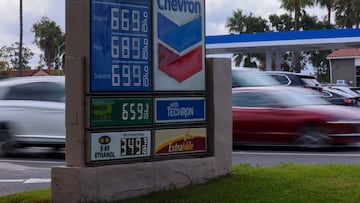How do rising gas prices affect retail sales?
As fuel prices increase, businesses face higher transportation costs that are often passed onto consumers.

Prices at the pump are on the rise once again, jumping eight percent in two months. According to the Bureau of Labor Statistics (BLS), increases in gas prices accounted for half of the 0.6 percent increase in the Consumer Price Index seen in August. Although drivers of gasoline-powered cars are likely to feel an additional pinch, consumers could see prices rise across the market as transportation costs for businesses balloon.
How do gas prices impact the price of other goods?
Retailers have to get products on their shelves, and the costs to get those goods from their manufacturers are called transportation costs. When gas prices rise, transporting goods becomes more costly. To avoid a dent in a company’s profit margins, prices are often raised to offset any possible losses.
However, oil and gas companies have been accused of price gouging as increases in global demand set energy prices soaring. In June, leaders in California, where drivers were paying the highest prices for gas, passed a law windfall profits tax that would levy higher state taxes on profits that exceed the average seen in recent years. This week, the Golden State’s legislature passed a new bill that softened the language of the June bill and would allow refiners leeway to claim that unscheduled maintenance was behind price increases. The law passed this summer required refiners to inform state regulators in advance of any maintenance. The new law heads to the governor’s desk, and his office has not published any statements on whether or not he plans to sign or veto the legislation.
Poverty rose as consumers paid more and got less
In 2022, when gas prices rose eleven percent in the first quarter, twelve percent in the second, and thirteen percent in the third, spending in retail remained strong, a sign to economists that consumers could tolerate higher prices. Although consumer spending did not fall, it did slow. According to data from the Bureau of Economic Analysis, consumer spending rose twelve percent from 2020 to 2021, supported by pandemic-related government assistance. From 2021 to 2022, that figure shrunk to nine percent. Consumer spending is only up six percent compared to last year.
However, while no dips in consumption were seen, the impact of inflation, in part driven by higher fuel costs, has had highly detrimental effects on millions of households. Last year, child poverty rose from a historic low of five percent to over twelve, as inflation cut into purchasing power.
In other words, although households were spending more, they were getting less, and higher prices pushed them into poverty or, in some cases, back into poverty.






